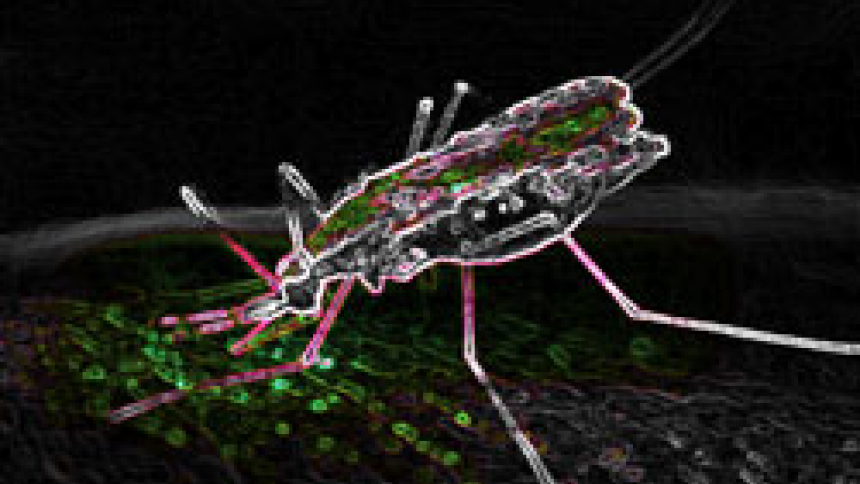Ecological theory distinguishes between top-down regulation of a population—where numbers are controlled by natural enemies like predators—and bottom-up regulation, in which limited resources curb population growth. Both top-down regulation from the immune system and bottom-up regulation from red blood cell availability are thought to limit growth of the malaria parasite within a host, but the relative contributions of these forces are difficult to quantify and are constantly changing over the course of infection. CIDD researchers Ottar Bjornstad, Andrew Read, Silvie Huijben, and Vicki Barclay worked with C. Jessica Metcalf and Brian Grenfell (formerly of CIDD) and in collaboration with Andrea Graham of Princeton to analyze the complex dynamics of malaria spread within hosts.
Using extensive data from malaria infections in mice, the authors utilize a novel statistical approach to quantify the strength of top-down ‘predation’ by the immune system and bottom-up control via red blood cell (RBC) limitation. Their analysis showed that the innate immune response saturates with increasing doses of parasites such that innate immune measures cannot control initial malaria growth if parasite numbers exceed a threshold value. Later on, adaptive (malaria-specific) immune responses are needed to explain infection dynamics. The authors estimate for the first time how immune clearance of malaria changes as a function of time and infectious dose. Additionally, their research found that parasite growth declines due to immune-mediated killing of healthy RBCs, implying that the host controls malaria not only through immune clearance of parasites and infected RBCs, but also by removing RBCs needed by the parasites. Therefore, some degree of anemia may be beneficial to a malaria-infected host. The authors’ approach could help optimize malaria treatments to take full advantage of the parasite control measures already acting within the host.
[Paranthetical note added by Andrew Read: This paper came out of a CIDD lunch, when I asserted that it was much harder to model within-host dynamics than epidemiological dynamics, since in-host data can be replicated and perturbed at will. That suggestion fired up Jess Metcalf, then a post-doc of measles experts Bryan Grenfell and Ottar Bjornstad at CIDD. Jess’s key insight, and what got Ottar and Bryan going, was that mathematically the dynamics of malaria parasites in a host was just like measles dynamics among hosts.].
Synopsis written by Megan Greischar.
Publication Details
Metcalf CJ, Graham AL, Huijben S, Barclay VC, Long GH, Grenfell BT, Read AF, & Bjørnstad ON
Partitioning regulatory mechanisms of within-host malaria dynamics using the effective propagation number
Journal: Science
333: 984-988
DOI Reference




